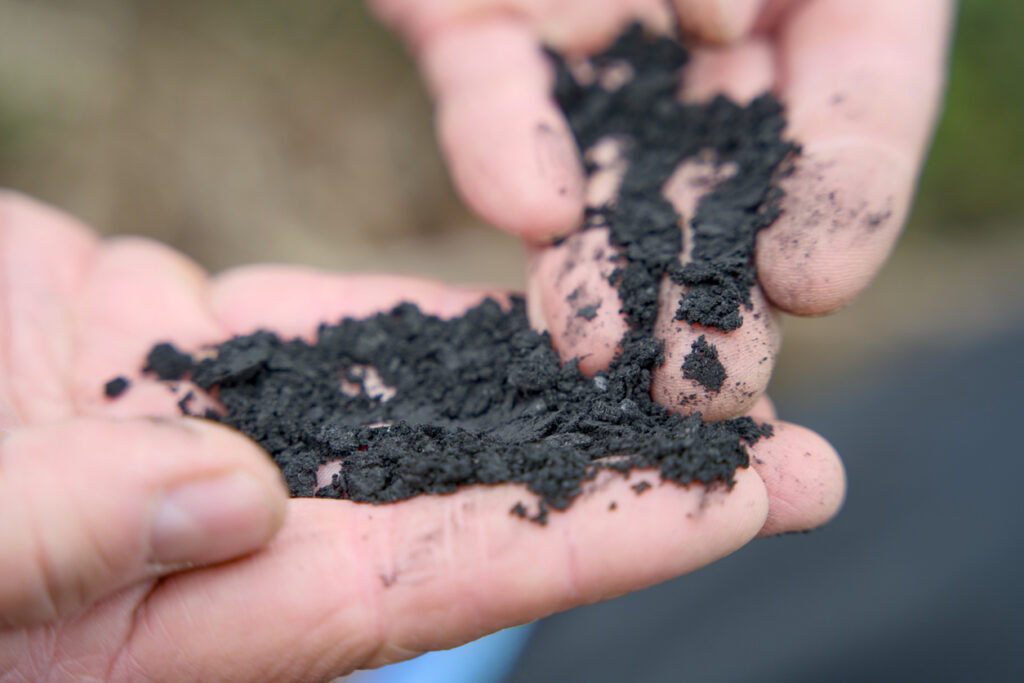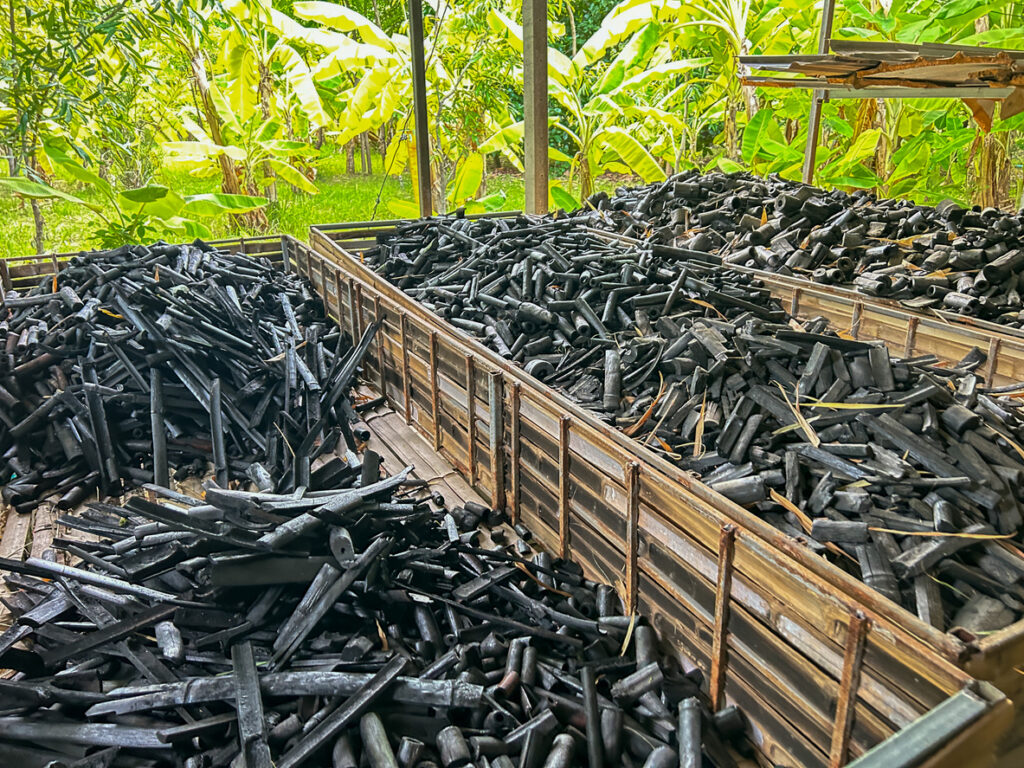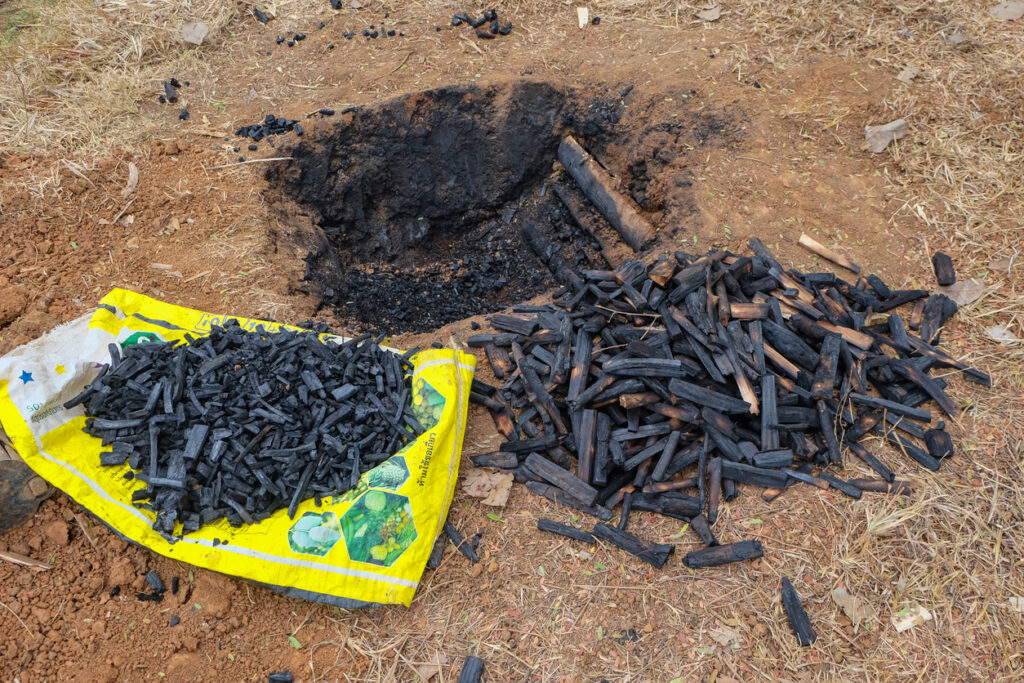
Biochar might sound like some kind of trendy new superfood, but it’s actually a powerful climate solution made from a very old idea. At its core, biochar is a type of charcoal made by heating organic material—like wood chips, crop waste, or even manure—in a low-oxygen environment. This process, called pyrolysis, locks carbon into a stable form that doesn’t easily break down. Instead of releasing carbon dioxide into the air as things decompose, biochar keeps it in the ground. The result? A material that’s good for soil, carbon storage, and even waste management. Here’s how biochar could quietly become one of our best environmental allies.
It locks away carbon for the long haul.
One of the biggest benefits of biochar is its ability to trap carbon in a stable form for hundreds, even thousands, of years. When plant matter breaks down naturally, it usually releases carbon dioxide into the atmosphere. But with biochar, that carbon gets “fixed” in place instead of floating off into the sky.
This makes biochar a practical way to pull carbon out of the carbon cycle and keep it out of the atmosphere. It doesn’t reverse climate change, but it can help slow it down—especially when used at scale alongside other solutions.
It improves soil health.
When added to soil, biochar can make a big difference. Its porous structure helps retain water and nutrients, which is a huge bonus for dry or depleted land. Think of it like a sponge that soaks up the good stuff and makes it available for plants to use over time.
This can reduce the need for chemical fertilisers and help crops grow more resiliently, even in poor soils. It’s particularly helpful in areas where agriculture has stripped the soil of its natural richness over the years.
It reduces greenhouse gas emissions from the soil.
Soil can be a surprising source of greenhouse gases like nitrous oxide and methane, especially on farms that rely heavily on fertilisers and animal waste. Biochar helps reduce these emissions by changing the way microbes interact with the soil. By creating more stable conditions underground, it lowers the chance of those gases escaping into the air. It’s not just about storing carbon—it’s also about stopping more from being released in the first place.

It turns agricultural waste into something useful.
Every year, farmers are left with piles of crop leftovers, manure, and other organic materials that often go to waste or get burned. Turning those byproducts into biochar gives them a second life, and keeps them out of landfills or burn pits. Instead of becoming pollution, agricultural waste can be converted into something that actually improves the land. It’s a practical way to recycle the stuff that would otherwise be discarded or cause environmental damage.
It helps retain water in drought-prone areas.
Because of its sponge-like structure, biochar helps soils hold onto moisture much longer than they normally would. This is incredibly useful in places that struggle with water shortages or unpredictable rainfall. With biochar in the soil, plants can stay hydrated for longer without constant watering. That not only saves water but helps protect crops during dry spells—which are becoming more common with climate change.
It can help restore damaged or polluted land
In areas with contaminated or degraded soil—like former industrial sites or over-farmed fields—biochar can help bring things back to life. It binds to heavy metals and other pollutants, helping reduce their harmful effects. While it’s not a silver bullet, biochar can be part of a larger strategy for land restoration. It supports microbial life, stabilises the ground, and makes it safer for planting or rewilding efforts.
It supports healthier microbial ecosystems
Healthy soil isn’t just dirt—it’s alive with bacteria, fungi, and other tiny organisms that keep the ecosystem ticking. Biochar provides a kind of housing for these microbes, giving them more places to thrive. This boost in microbial activity helps break down organic matter, cycle nutrients, and build better soil structure overall. When the soil is happy, plants are usually healthier too—and that means stronger food systems.

It reduces the need for synthetic fertilisers.
Because biochar holds onto nutrients and slowly releases them, it reduces the need for chemical fertilisers. Farmers can use less while still getting the same—or even better—results in crop growth and yield. This not only saves money but helps prevent nutrient runoff, which can pollute rivers, lakes, and oceans. It’s a small change that can lead to big environmental wins over time.
It’s a useable tool for small and large farms
Biochar doesn’t require massive infrastructure to get started. Small-scale farms, community gardens, and even home growers can make their own using controlled burns or simple kilns. At the industrial level, large-scale systems are already being developed. That flexibility means it’s a solution that can work at almost any scale. Whether you’re growing a few vegetables or managing a commercial field, biochar can play a role in improving sustainability.
It fits into a circular economy model
Biochar is a great example of circular thinking: take waste, turn it into something useful, and reinvest it into the system that created it. Nothing is wasted, and the benefits loop back into food production, water conservation, and carbon reduction. As the world looks for low-tech, accessible ways to support the environment, biochar stands out. It’s not flashy, but it works, and it could quietly become one of the most important climate tools we’ve got.